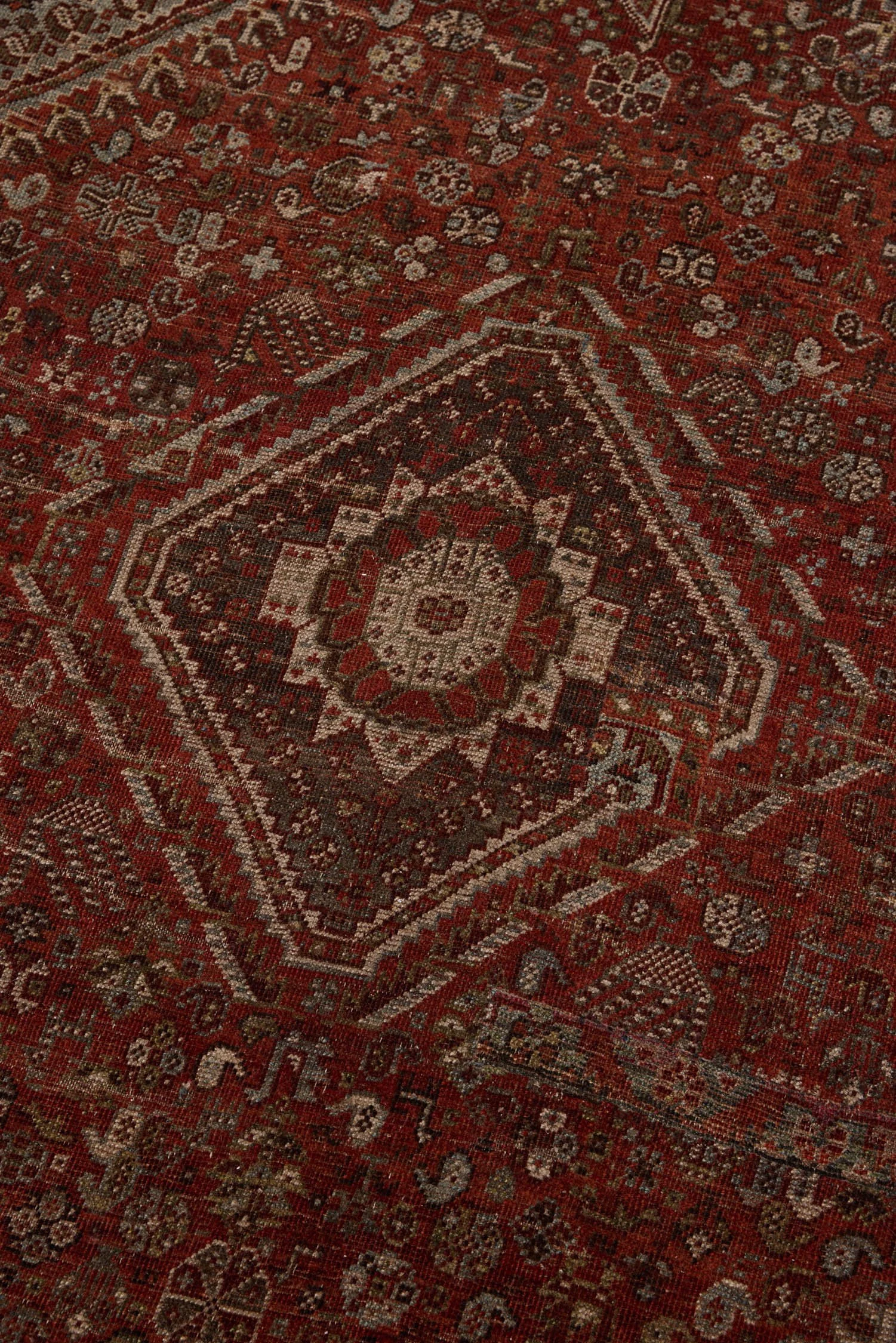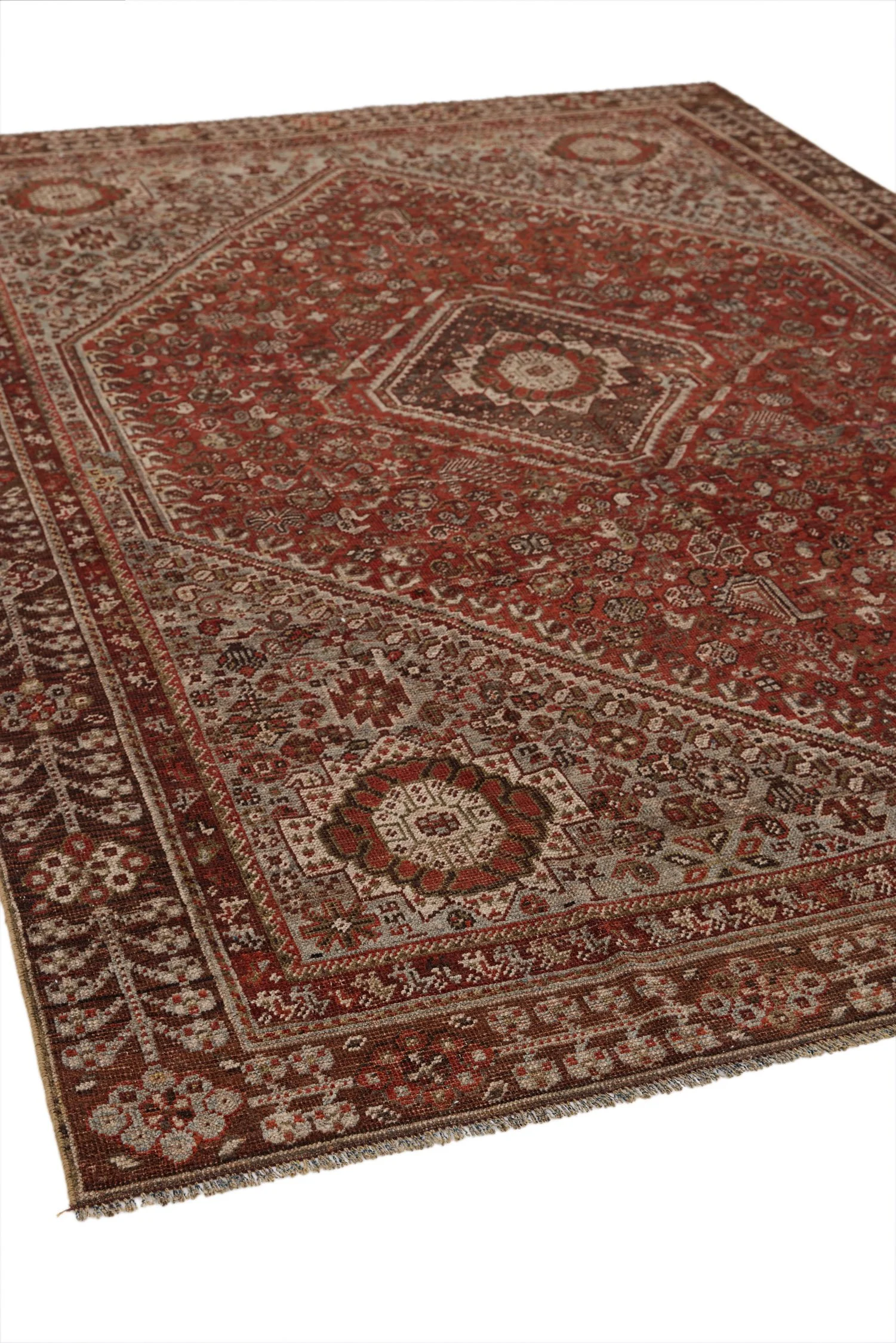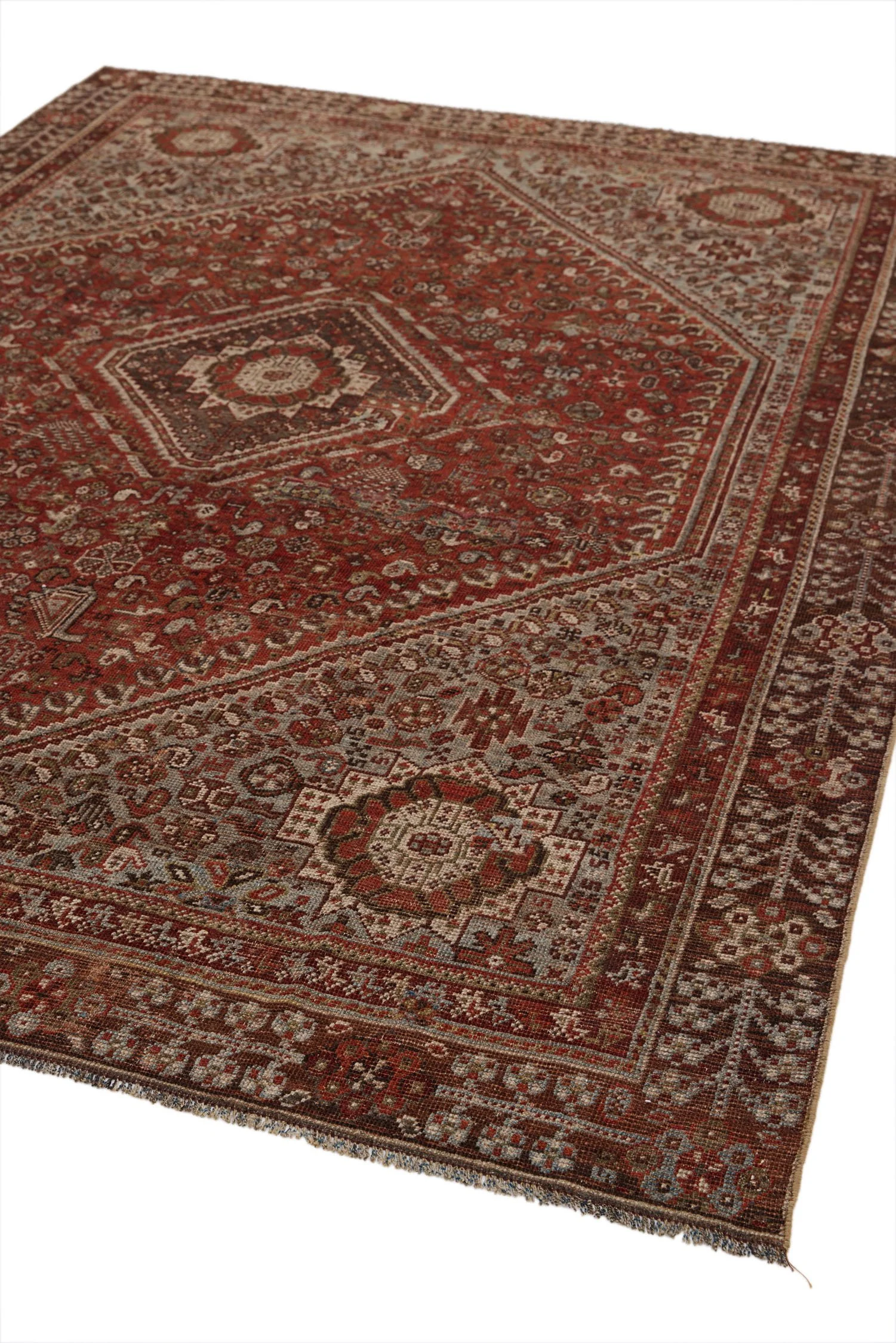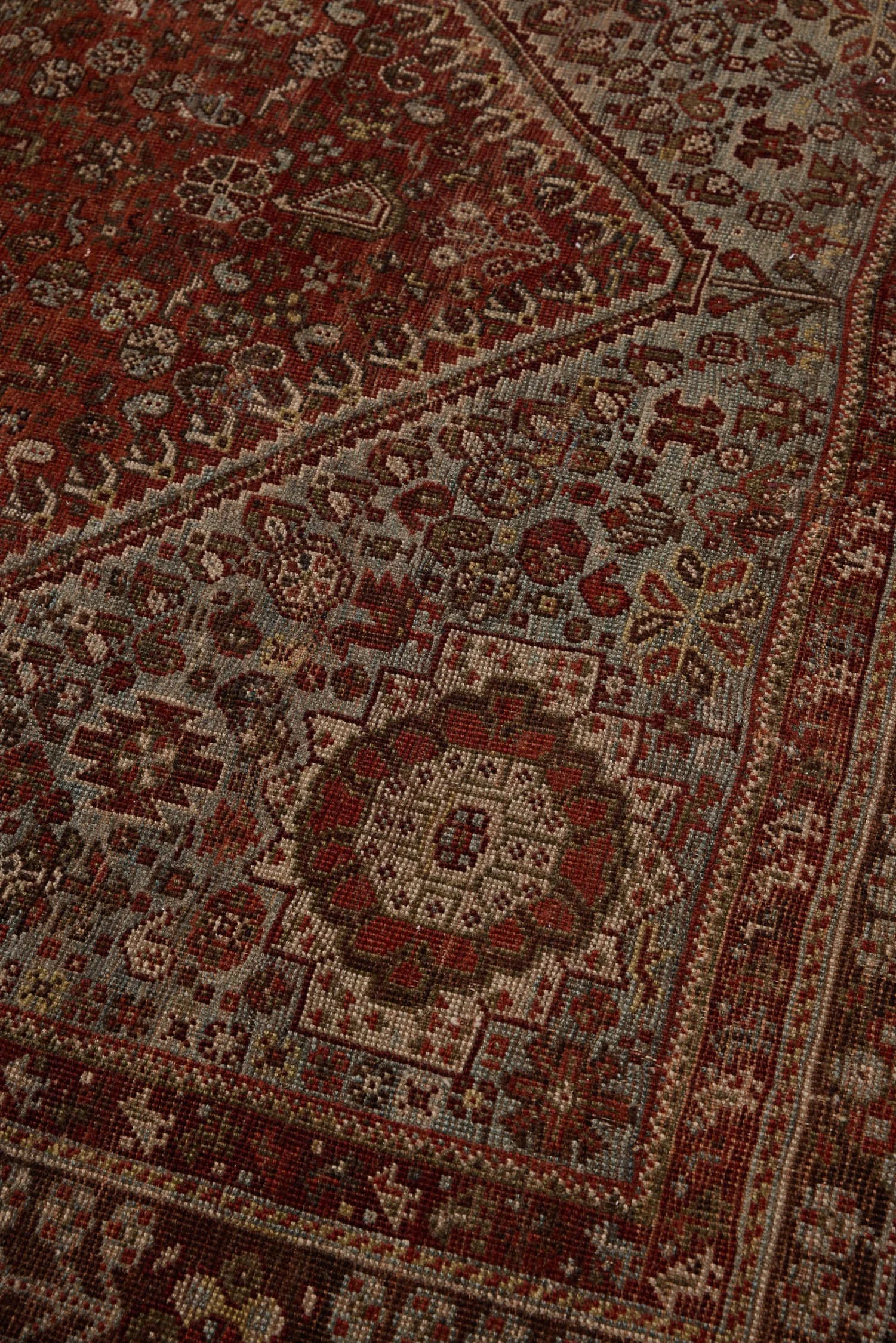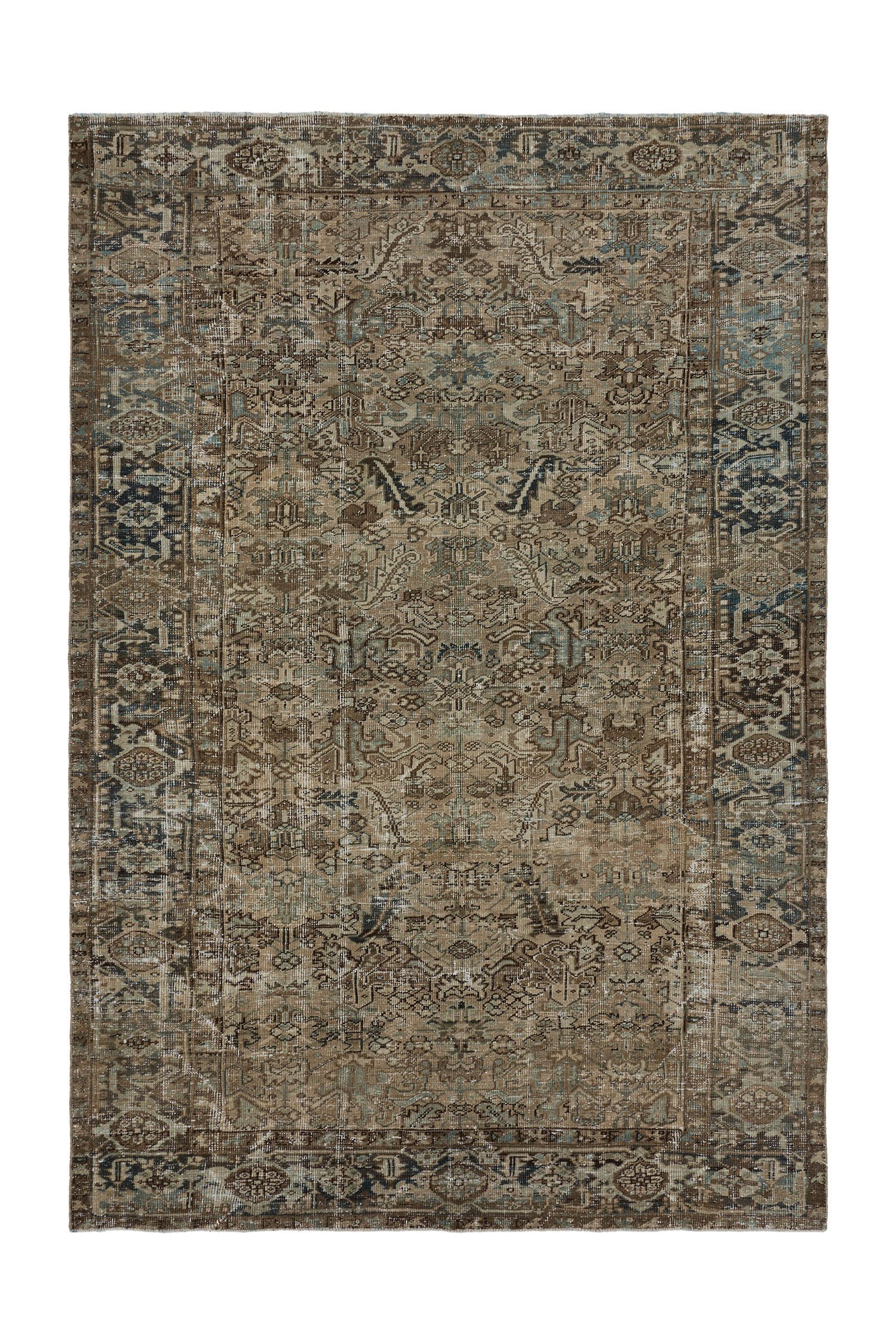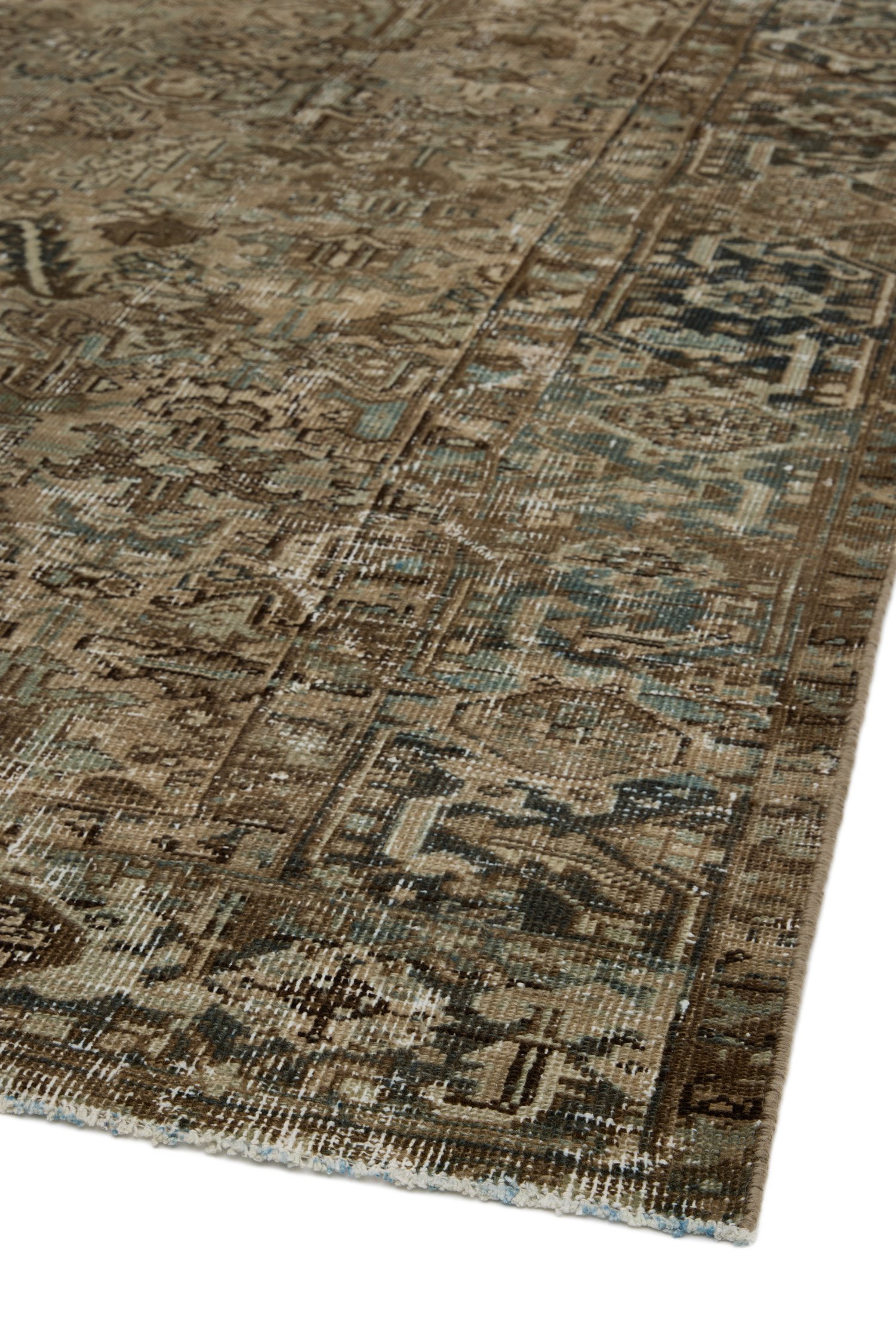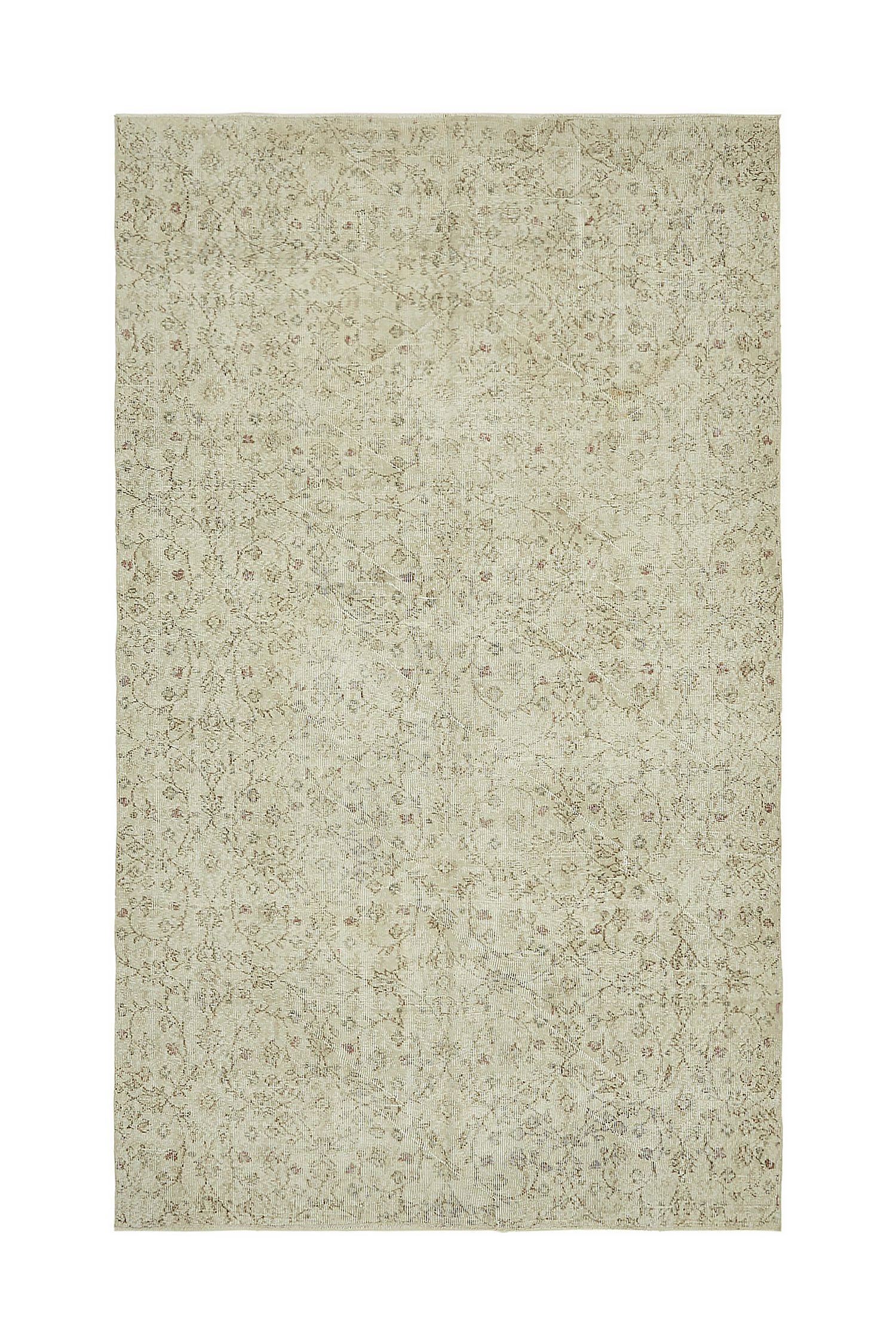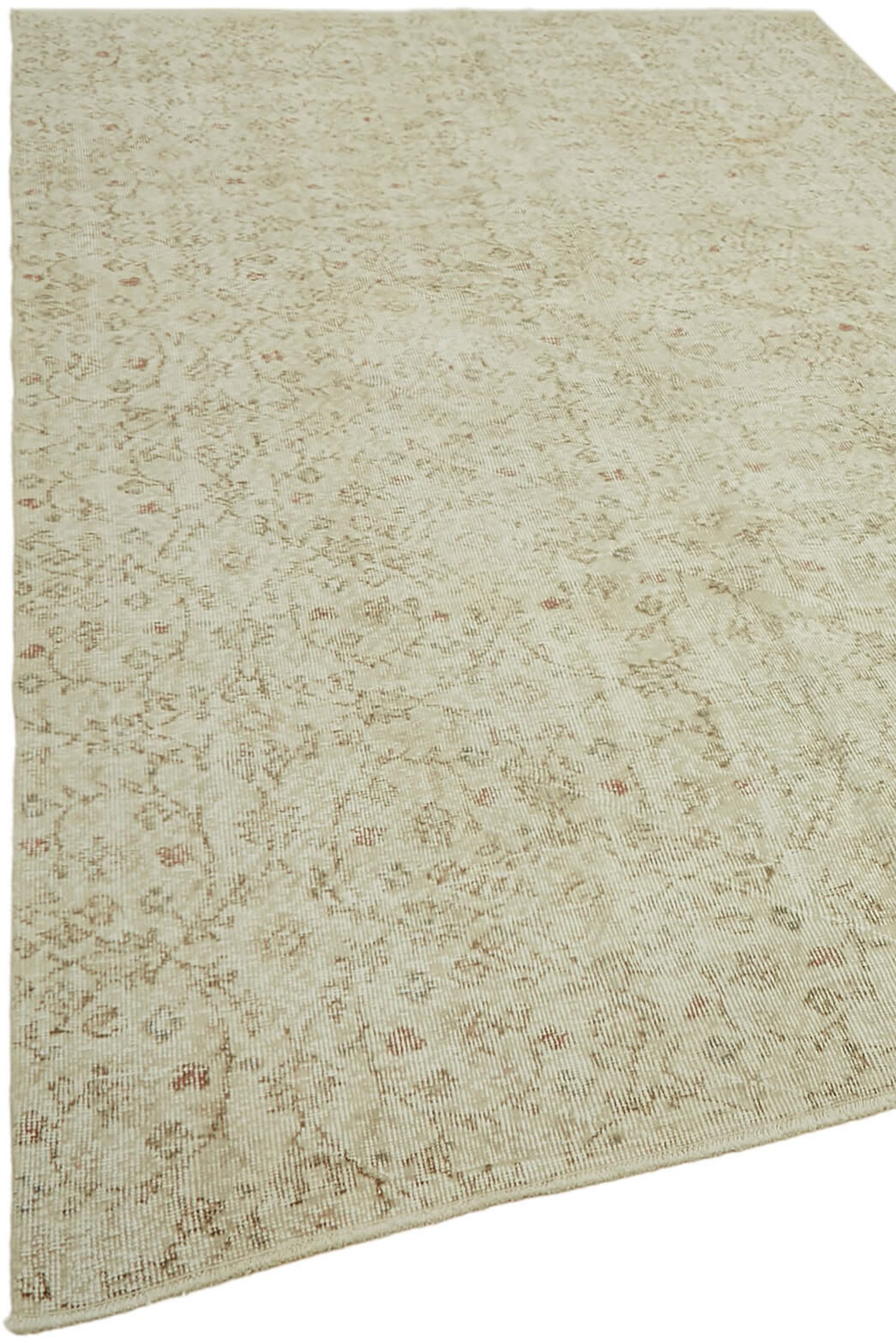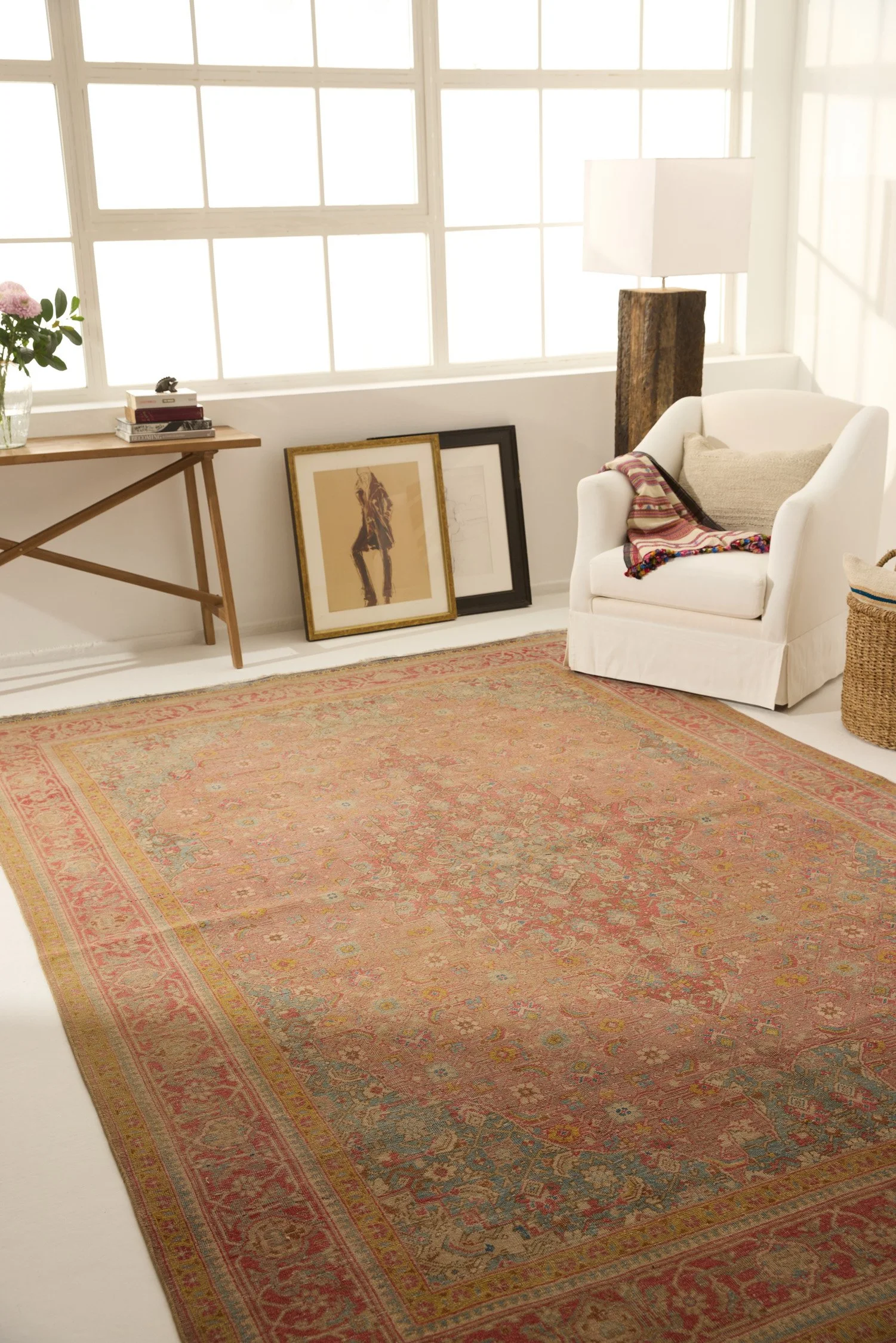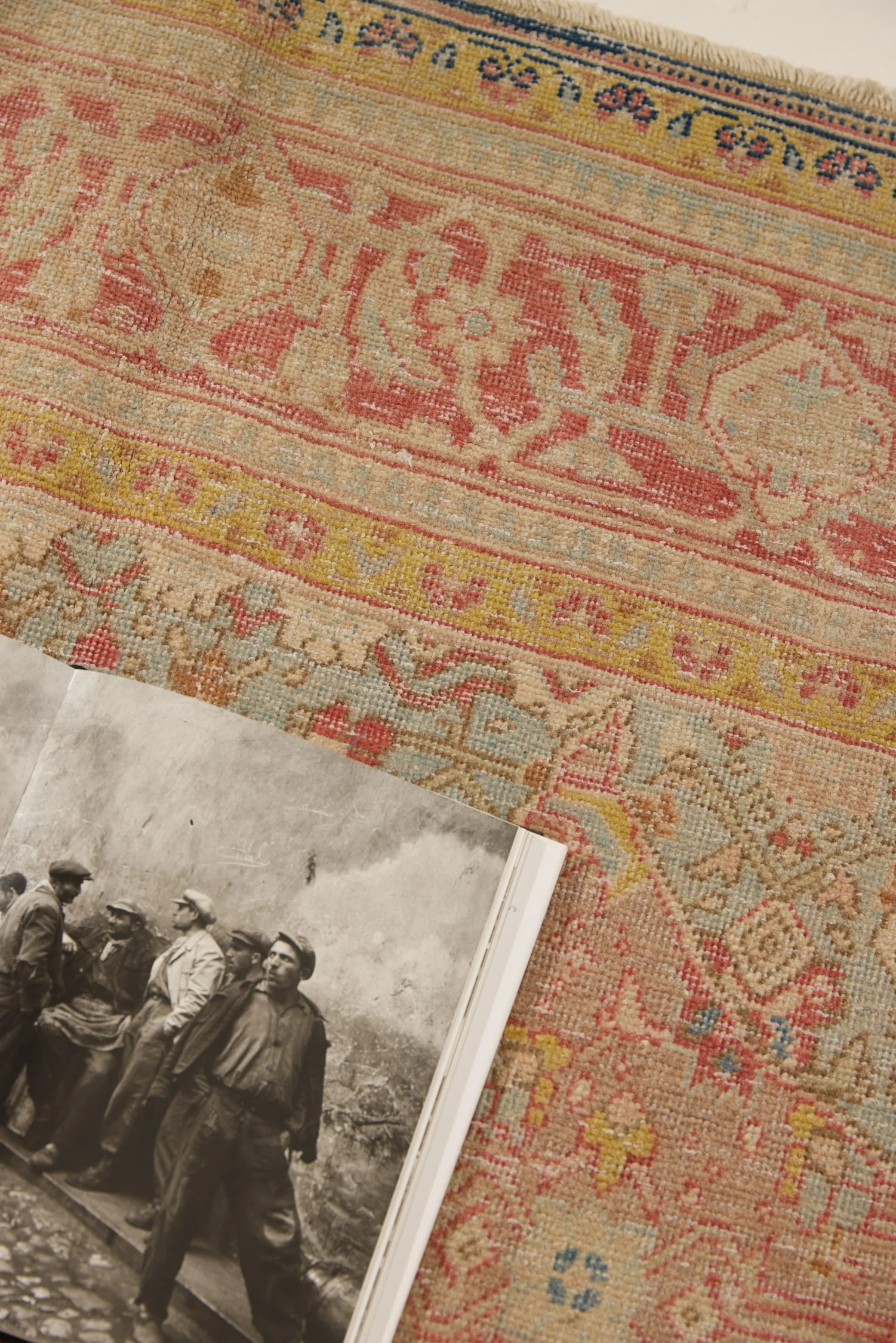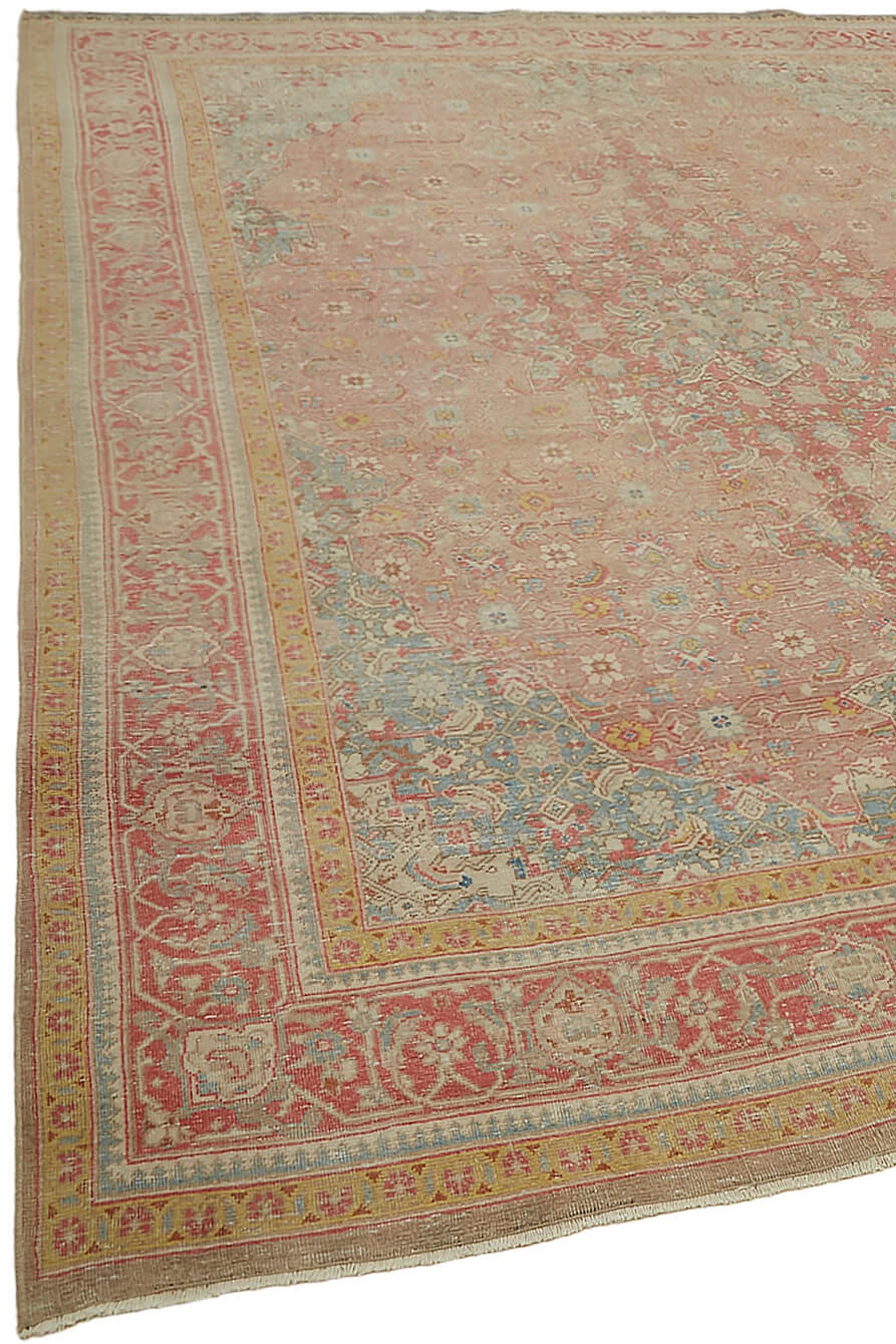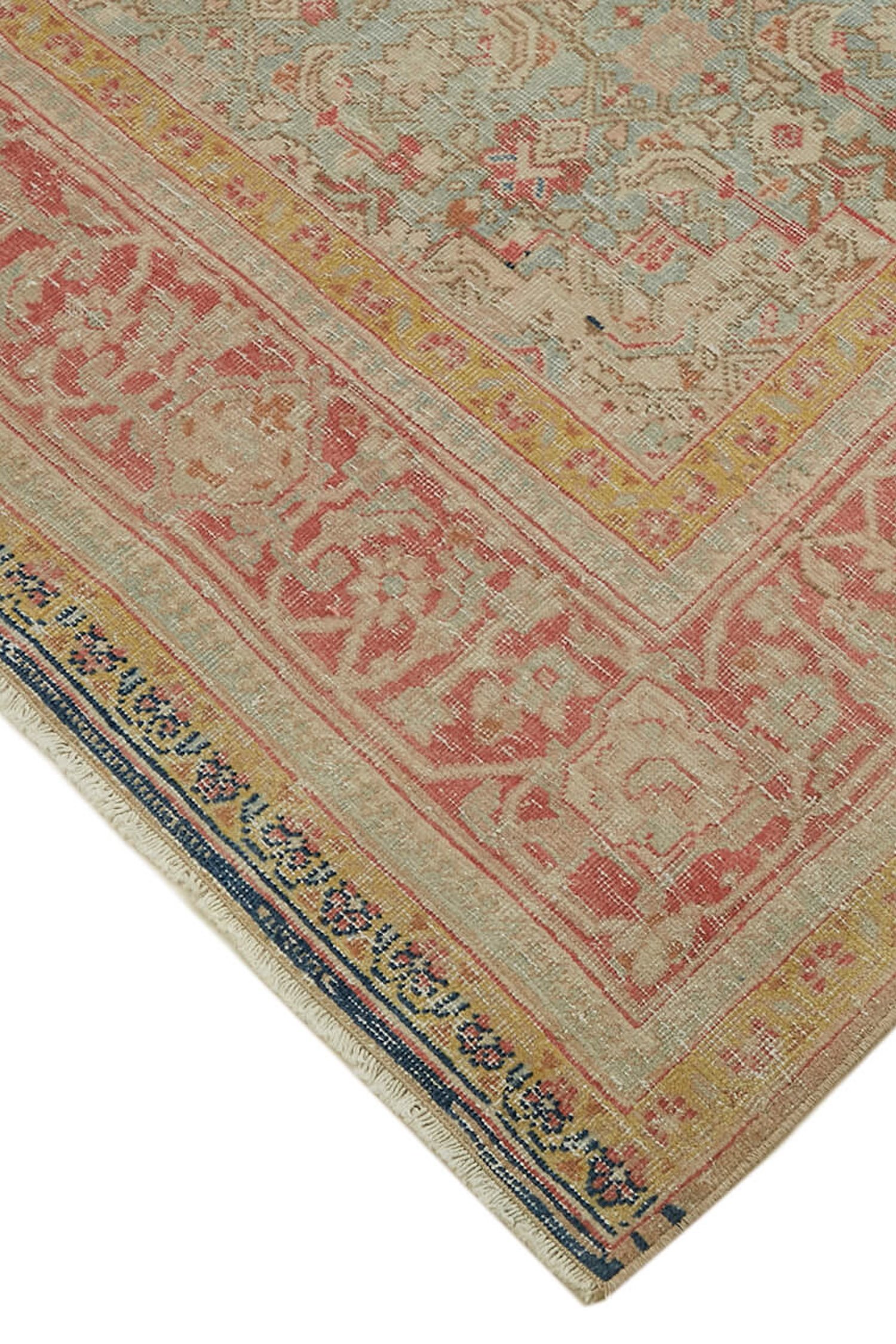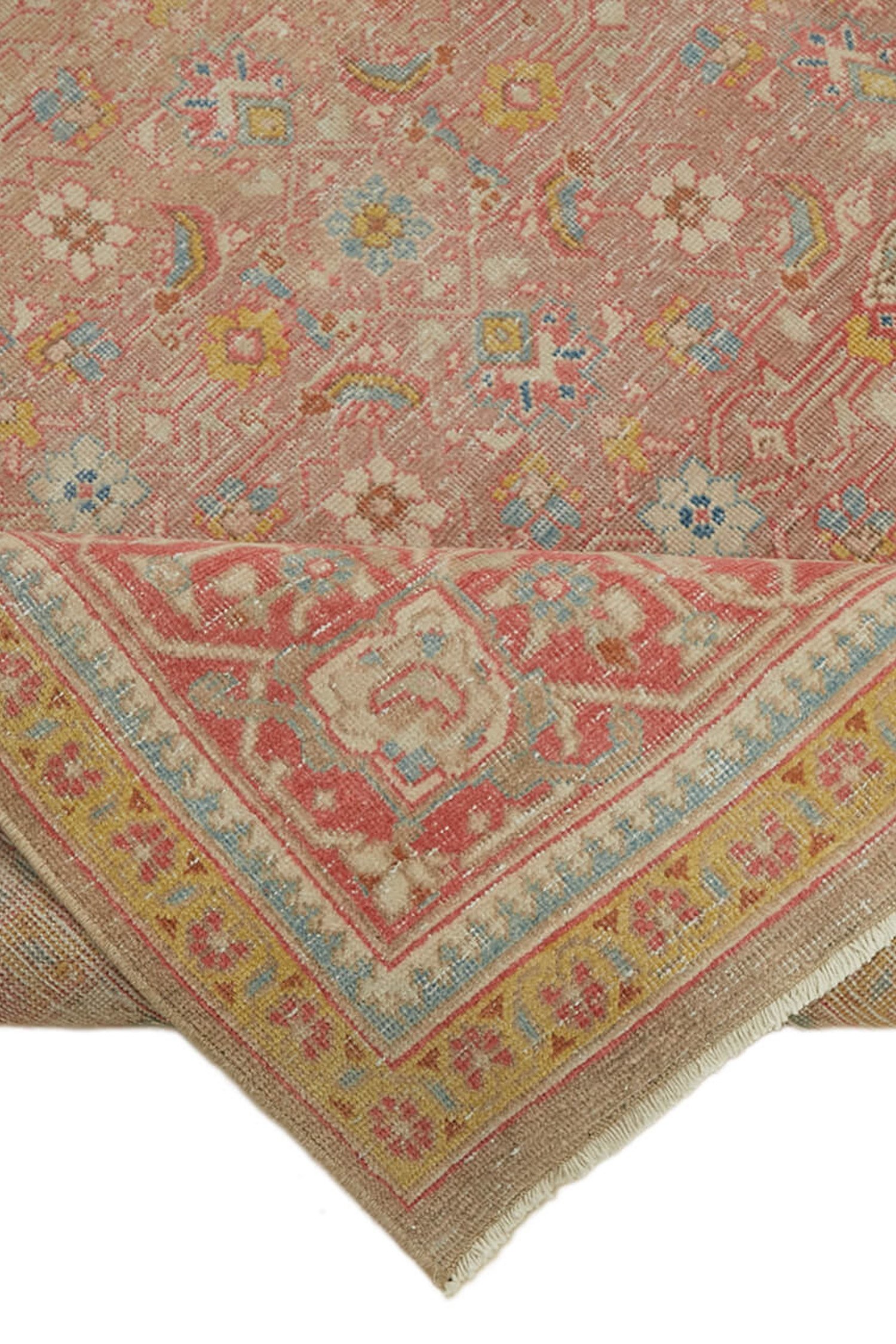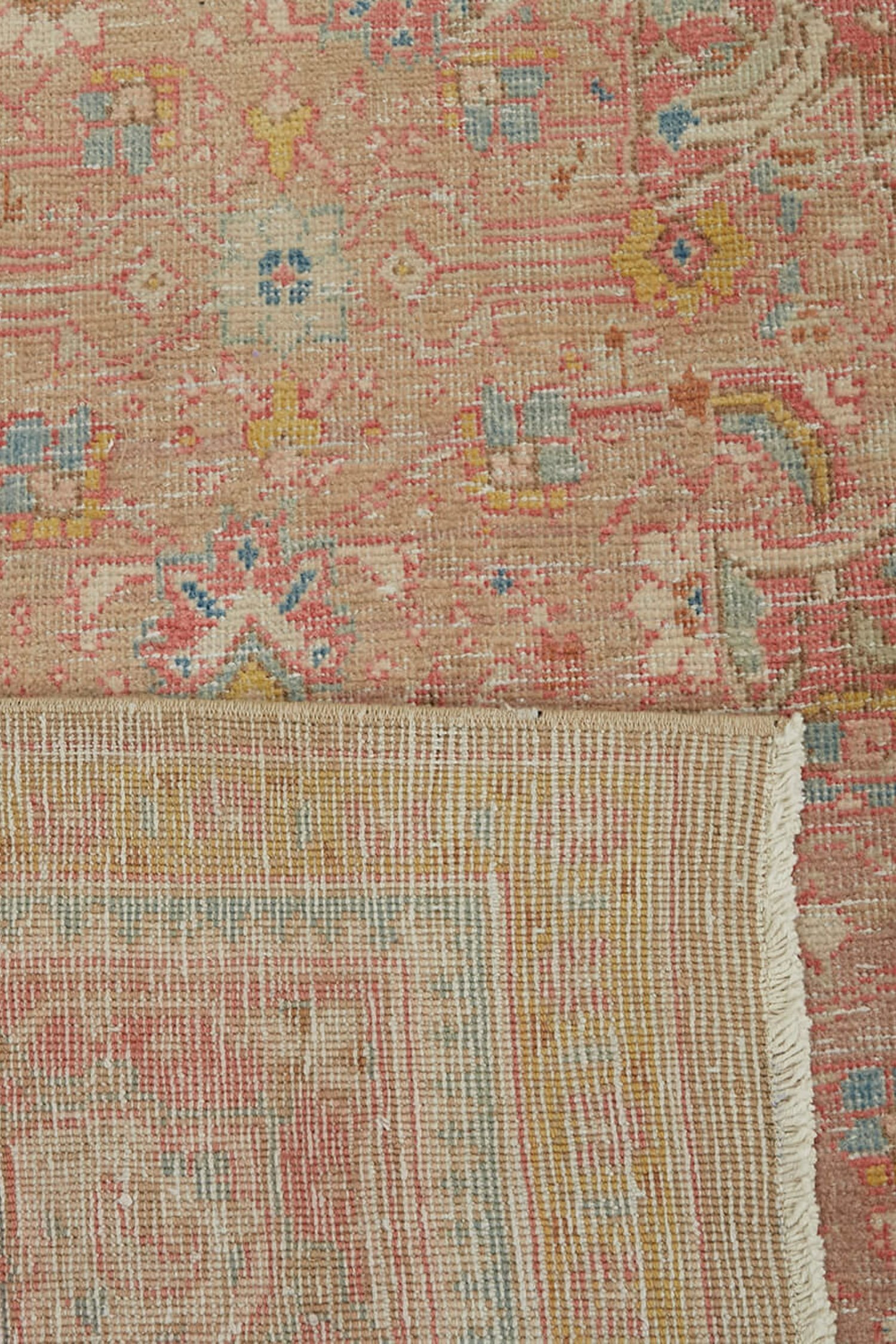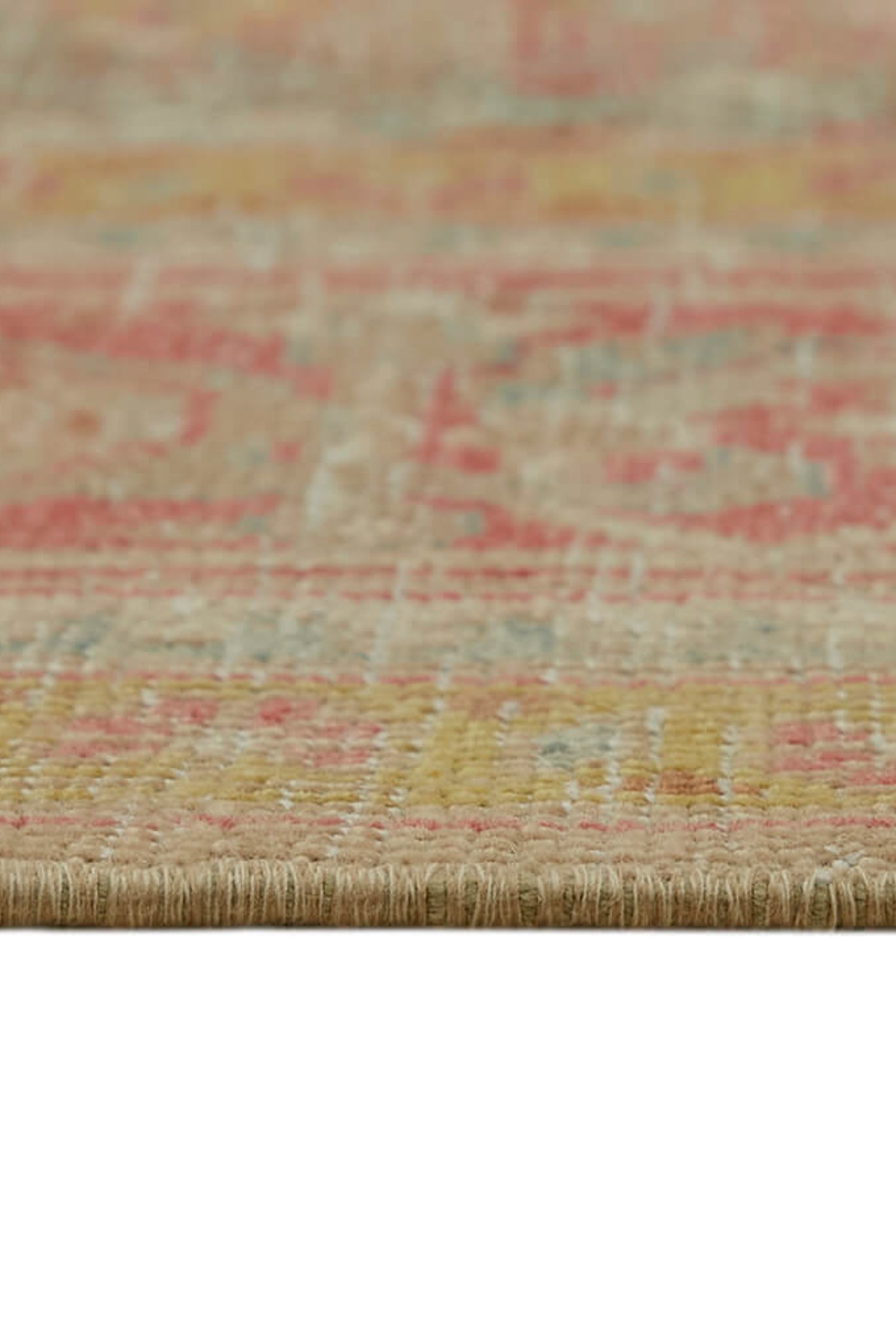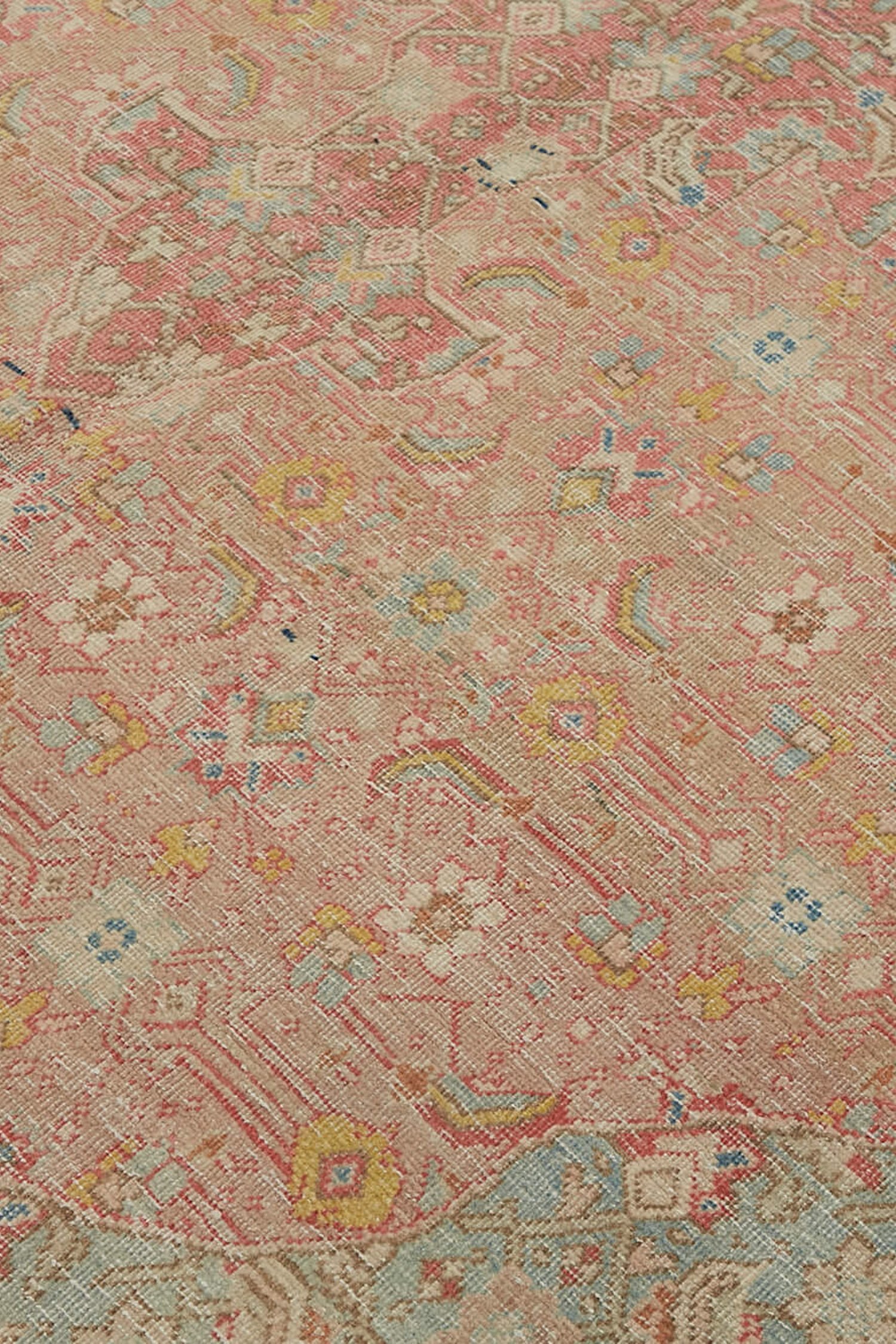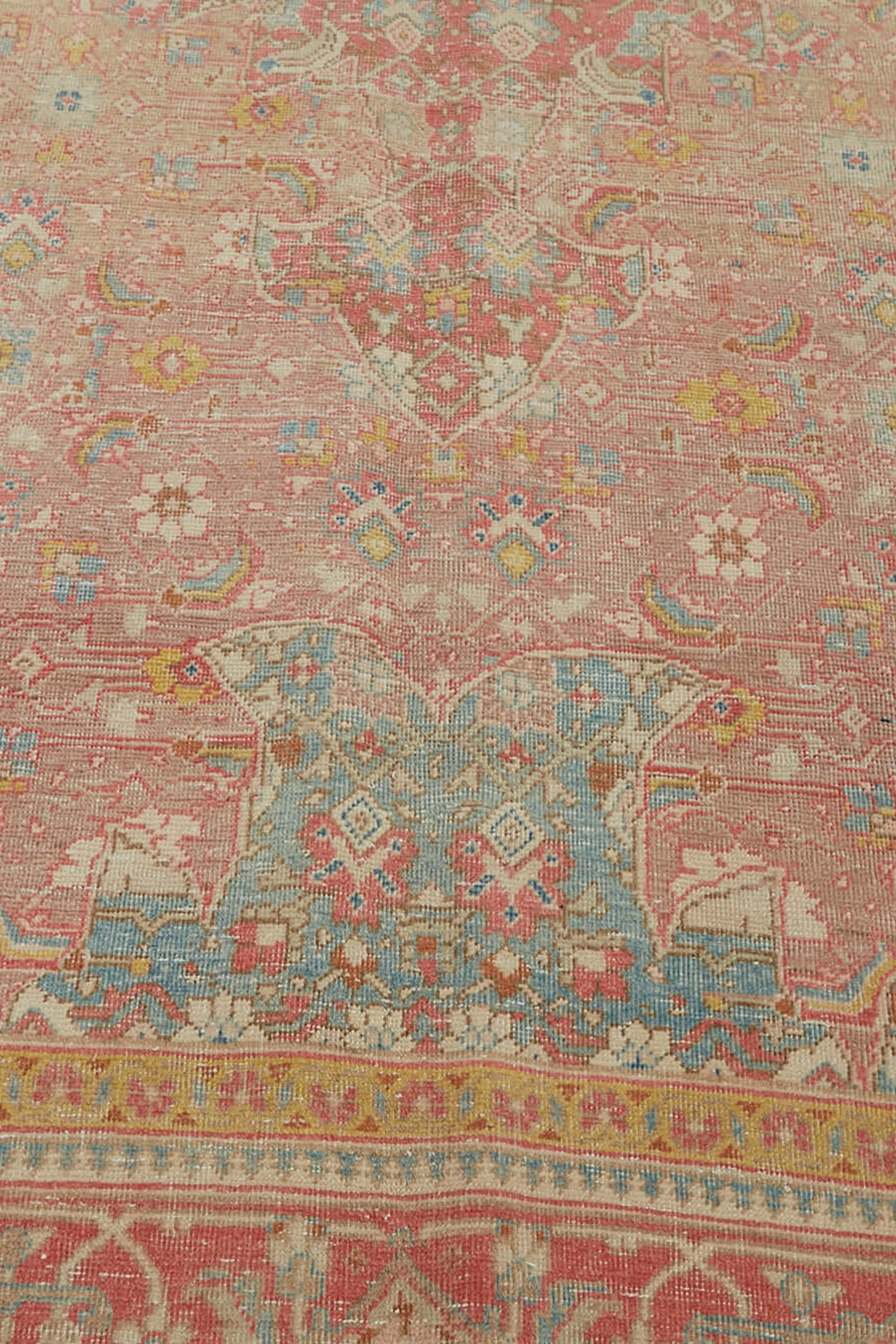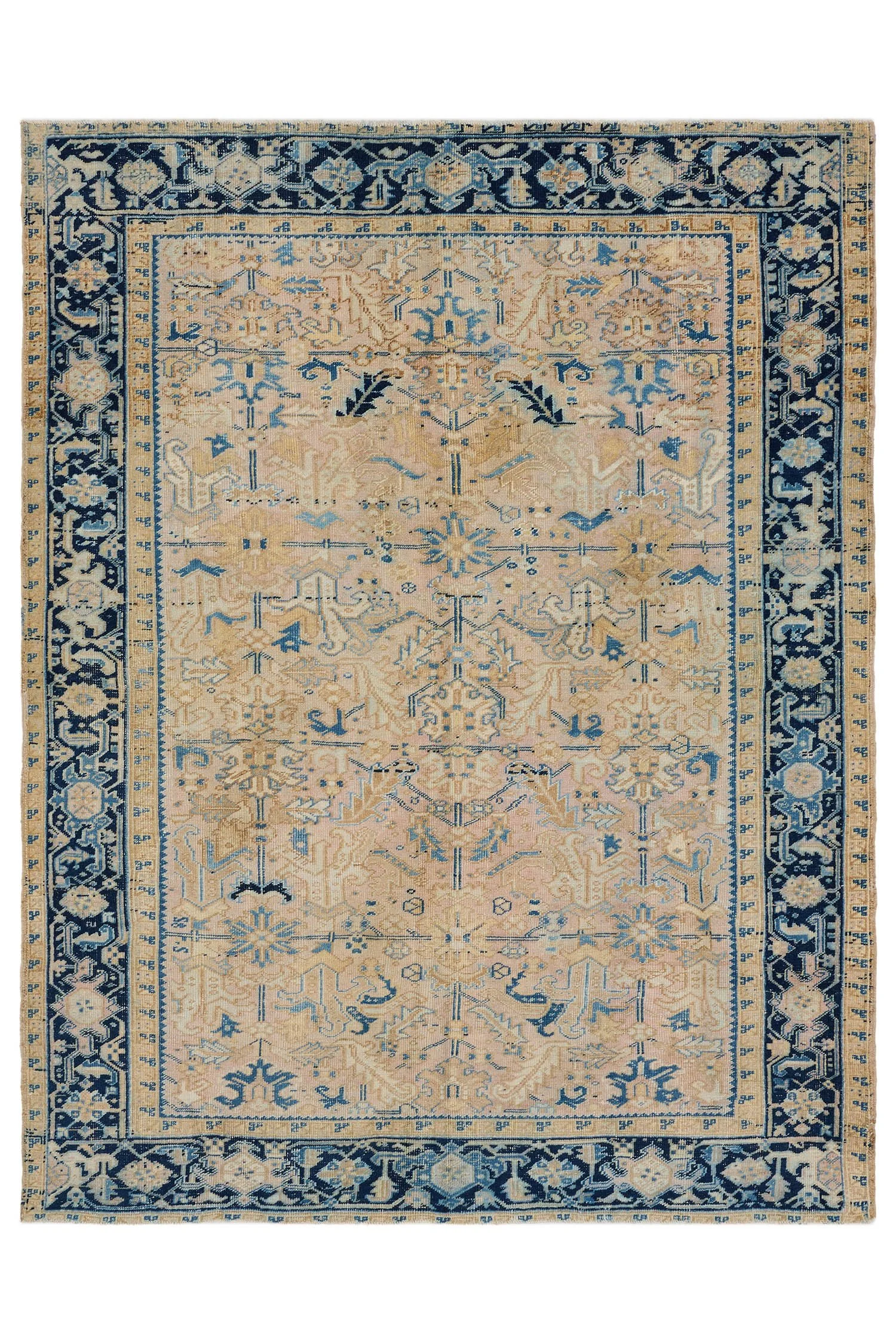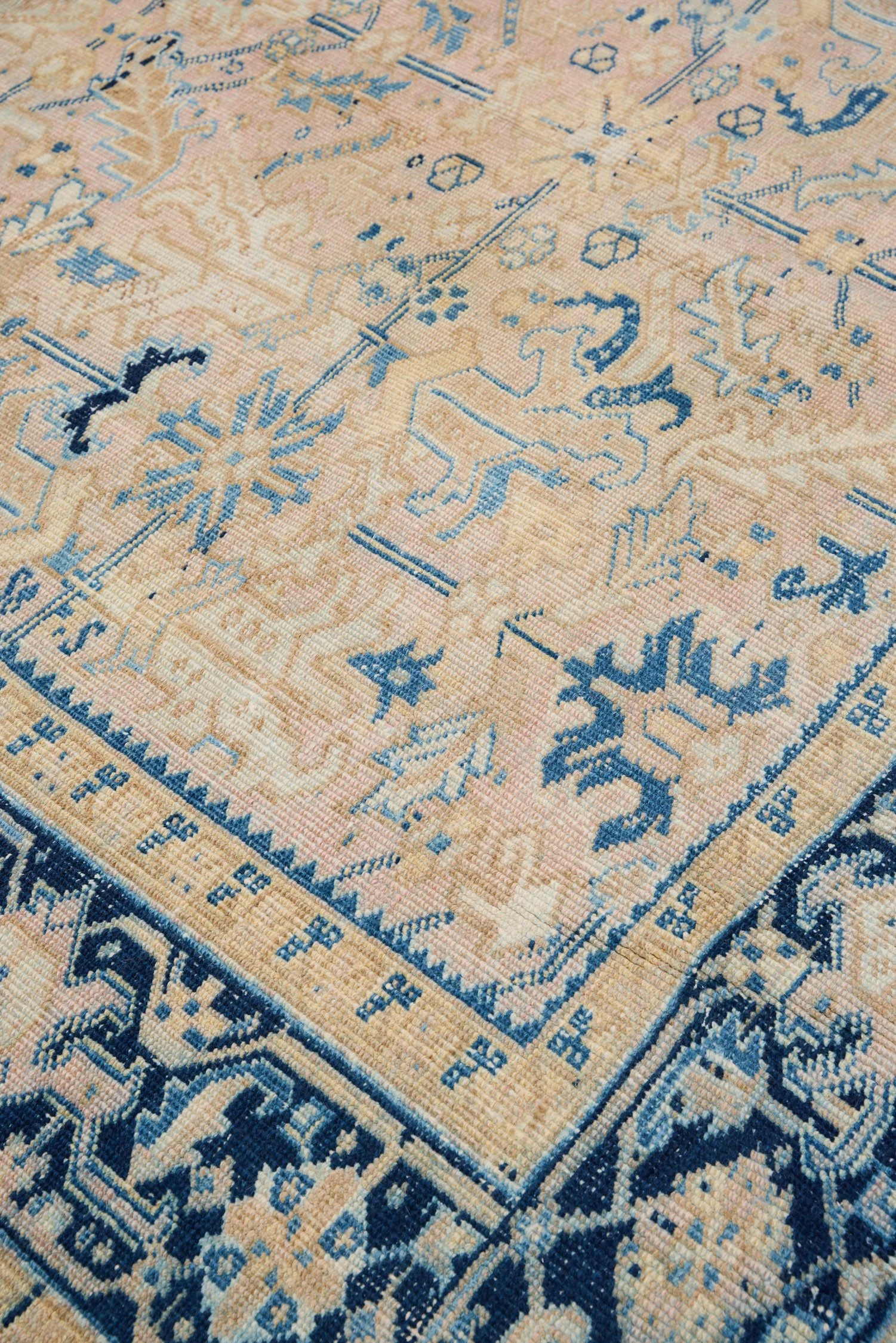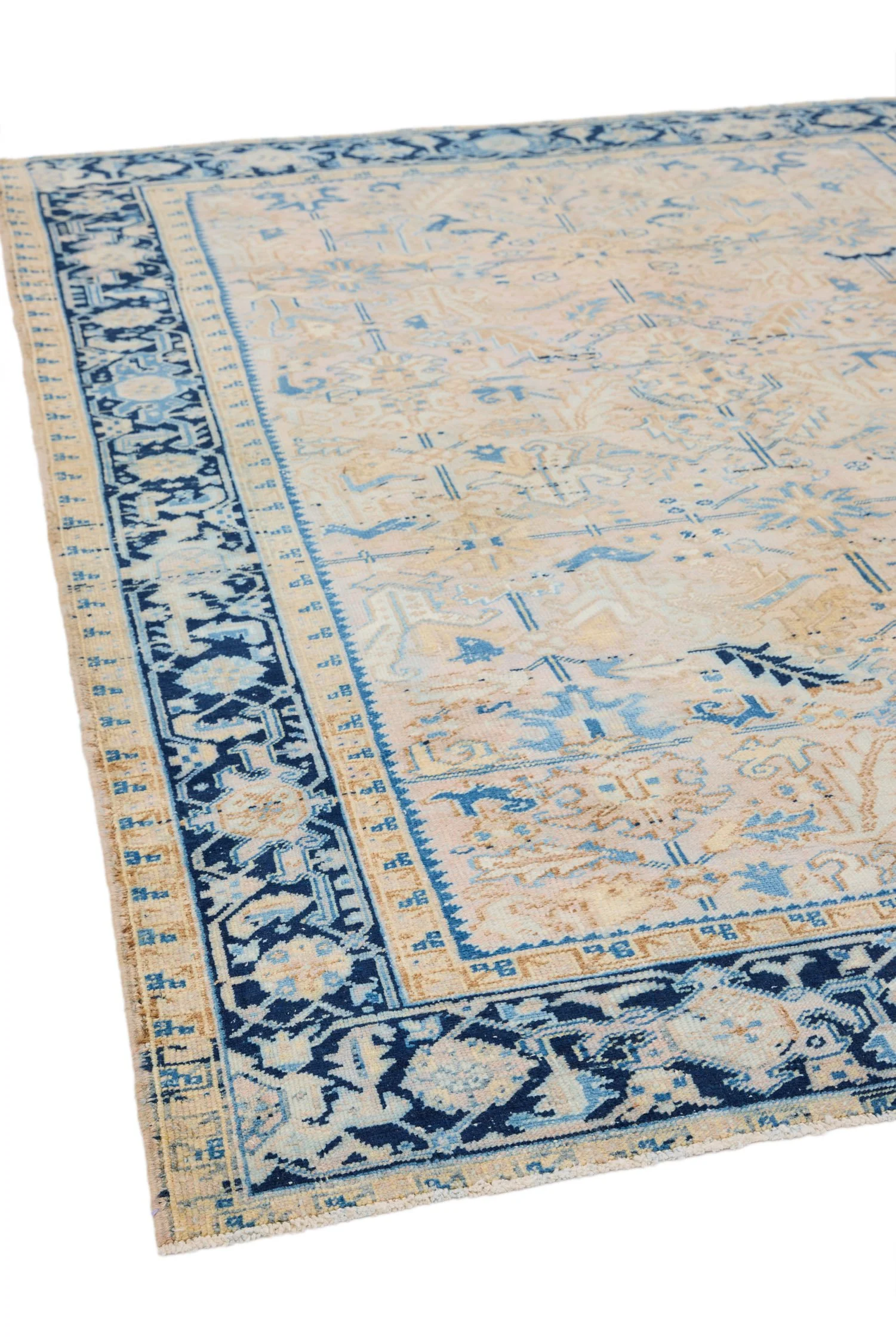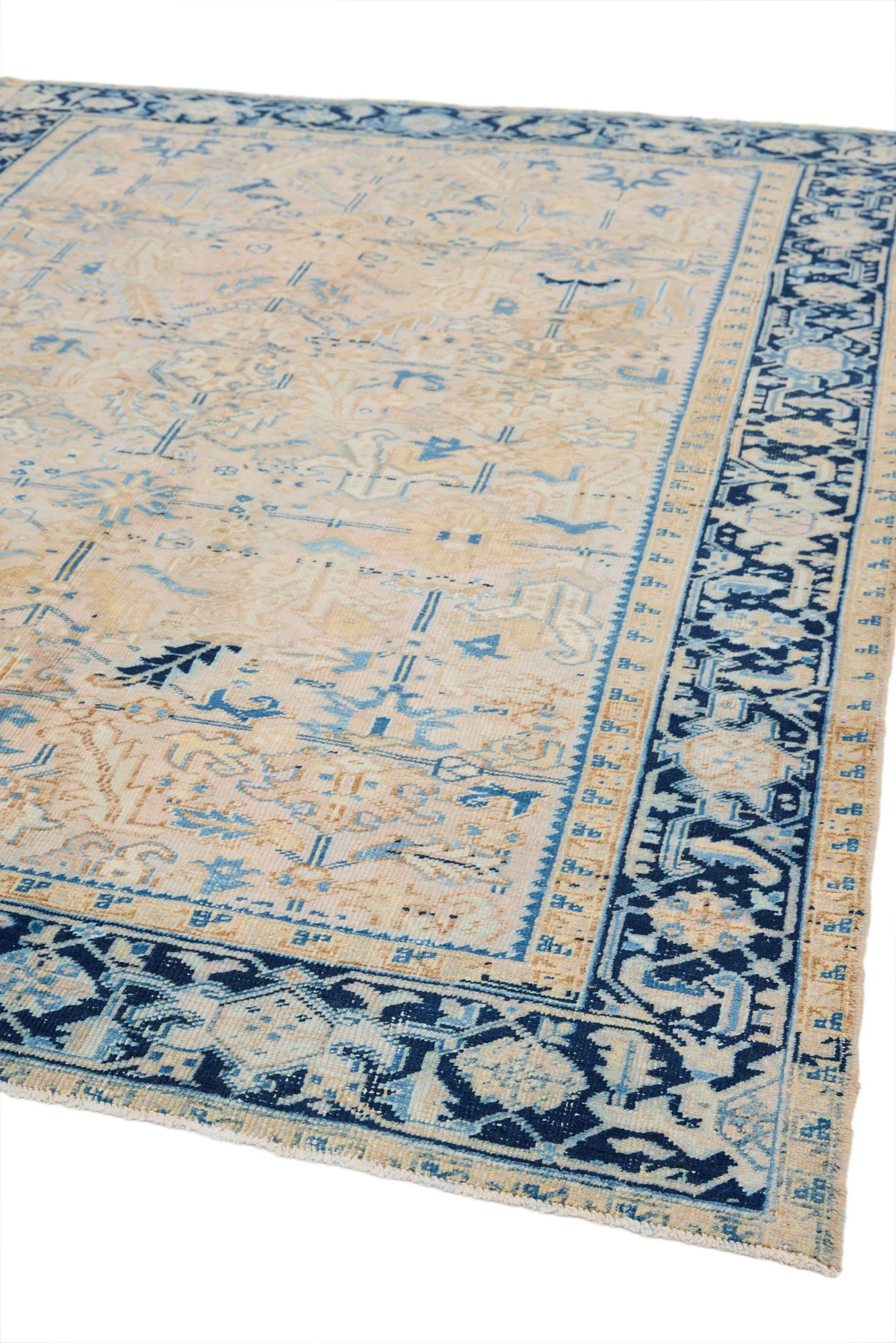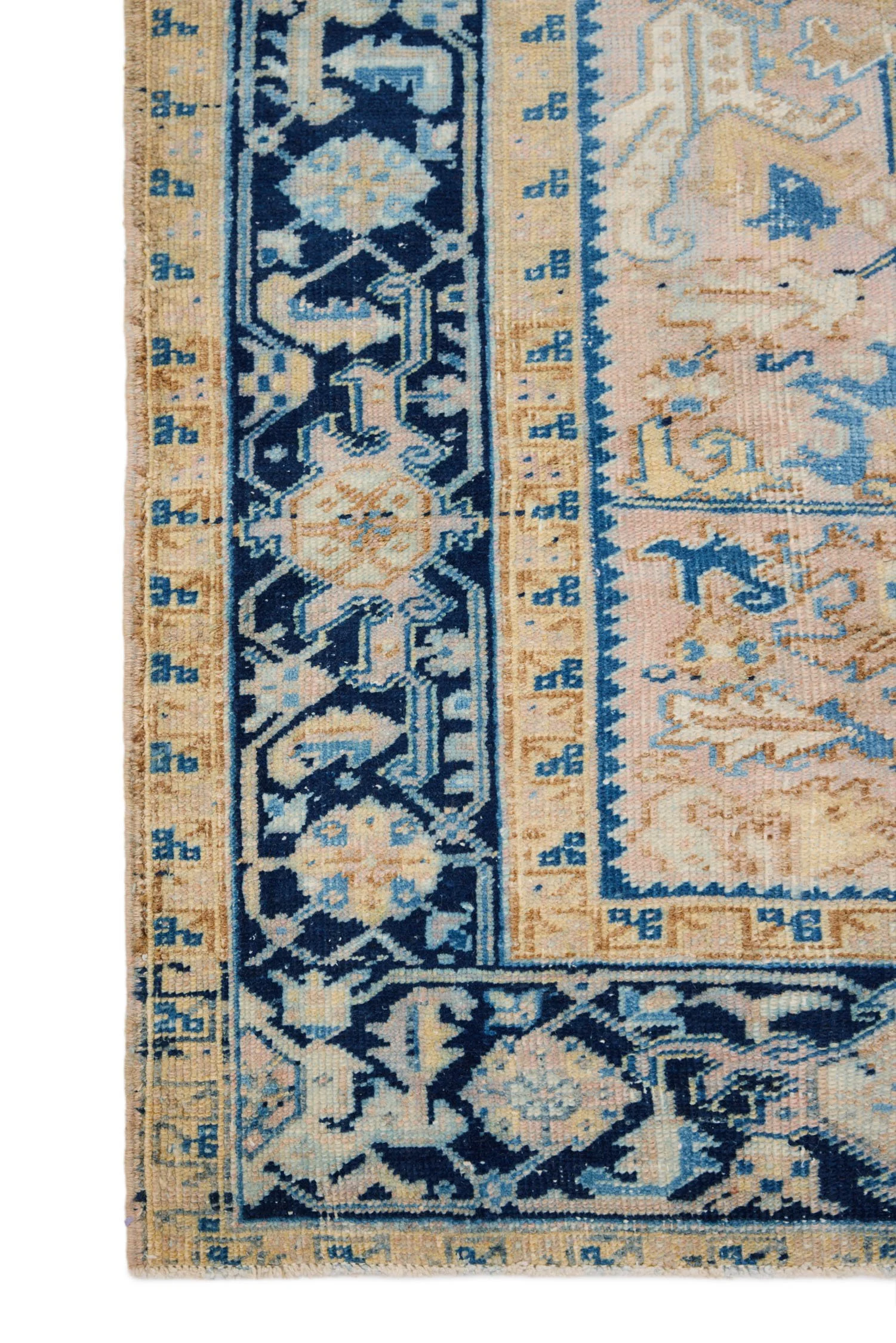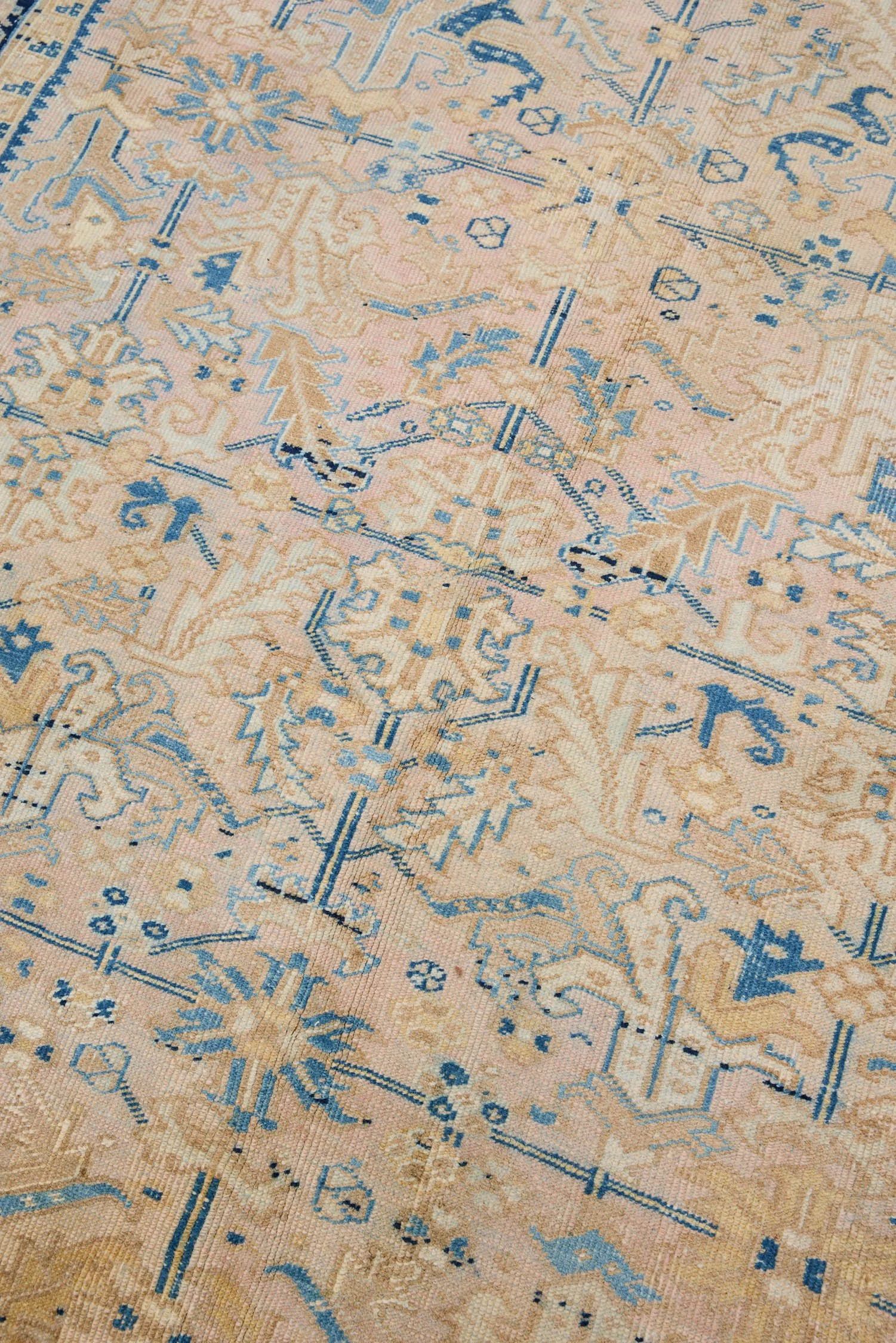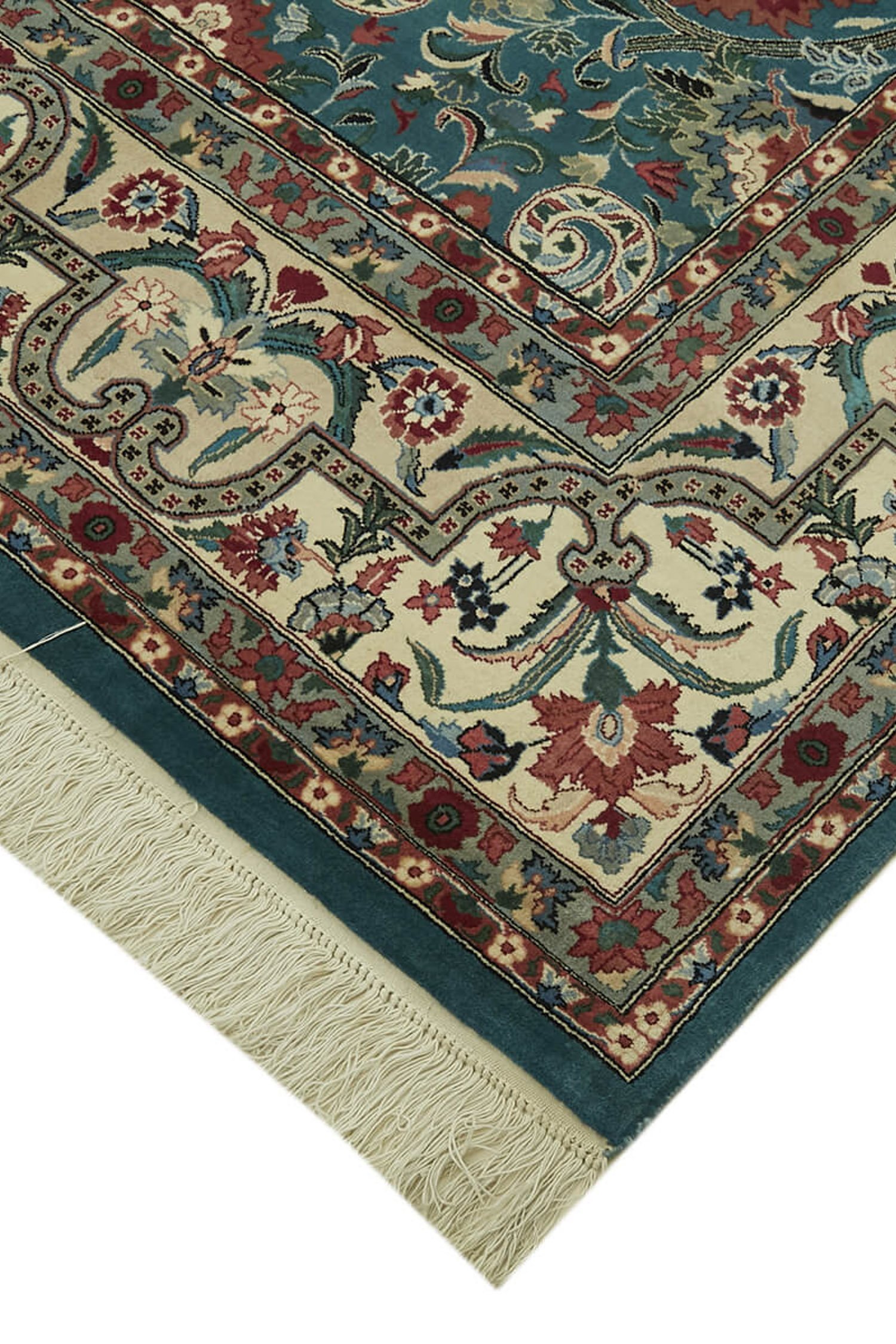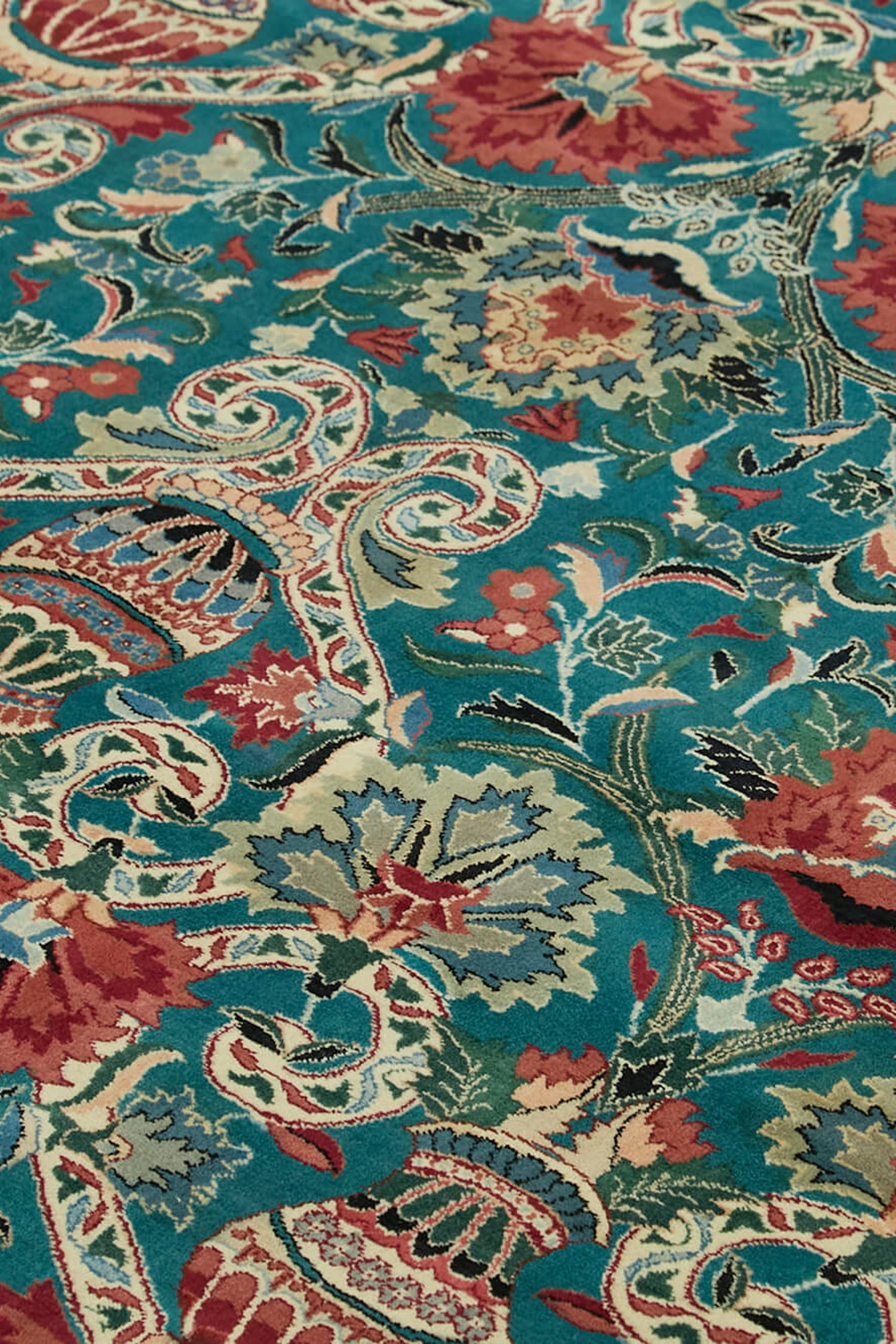Heritage and Craftsmanship
The villages around Heriz developed a weaving tradition distinct from the urban workshops of Tabriz to their south. Working with sturdier construction and bolder design sensibilities, village weavers created rugs meant for daily life rather than ceremonial display. The angular quality of Heriz drawing emerged partly from the weaving structure itself, as the relatively coarser knotwork naturally produced geometric forms rather than the curved lines possible in finer city production. This resulted in a design vocabulary that feels both deliberate and inevitable, pattern flowing from process.
Design Elements
The hexagonal medallion anchors the composition with geometric certainty, its form echoed in modified versions throughout the dense field. Stylized flowers and leaves fill the spaces between larger motifs, creating visual complexity that rewards extended viewing. The angular drawing characteristic of Heriz work gives even organic forms like florals a structured quality, geometry, and nature meeting in a distinctly regional interpretation. Substantial borders frame this activity with earthy brown tones, their weight providing visual containment for the energetic field.
Placement
At 6'0" x 8'2", this rug suits living rooms, studies, or bedroom spaces where a bold presence enhances rather than overwhelms. The madder red field brings warmth and energy, while the deep indigo and earthy borders ground the composition. Its size makes it effective for defining seating areas or anchoring beds, substantial enough to make an impact while remaining manageable in moderately scaled rooms. The traditional color palette and geometric strength work within interiors ranging from classic to eclectic.
Care Recommendations
To preserve the rug's beauty:
Rotate periodically for even wear
Vacuum regularly using a suction-only setting
Address spills immediately by blotting, never rubbing
Professional cleaning recommended annually
Avoid direct sunlight to maintain color integrity
Heriz rugs from this mid-century period represent village weaving at a moment before mechanization changed production methods. The structural integrity evident in these pieces, their dense knotwork and sturdy construction, means they continue performing their intended function decades after creation. For those drawn to rugs that balance aesthetic appeal with durability, that bring color and pattern without fragility, Heriz weaving offers enduring appeal that transcends shifting design trends.



